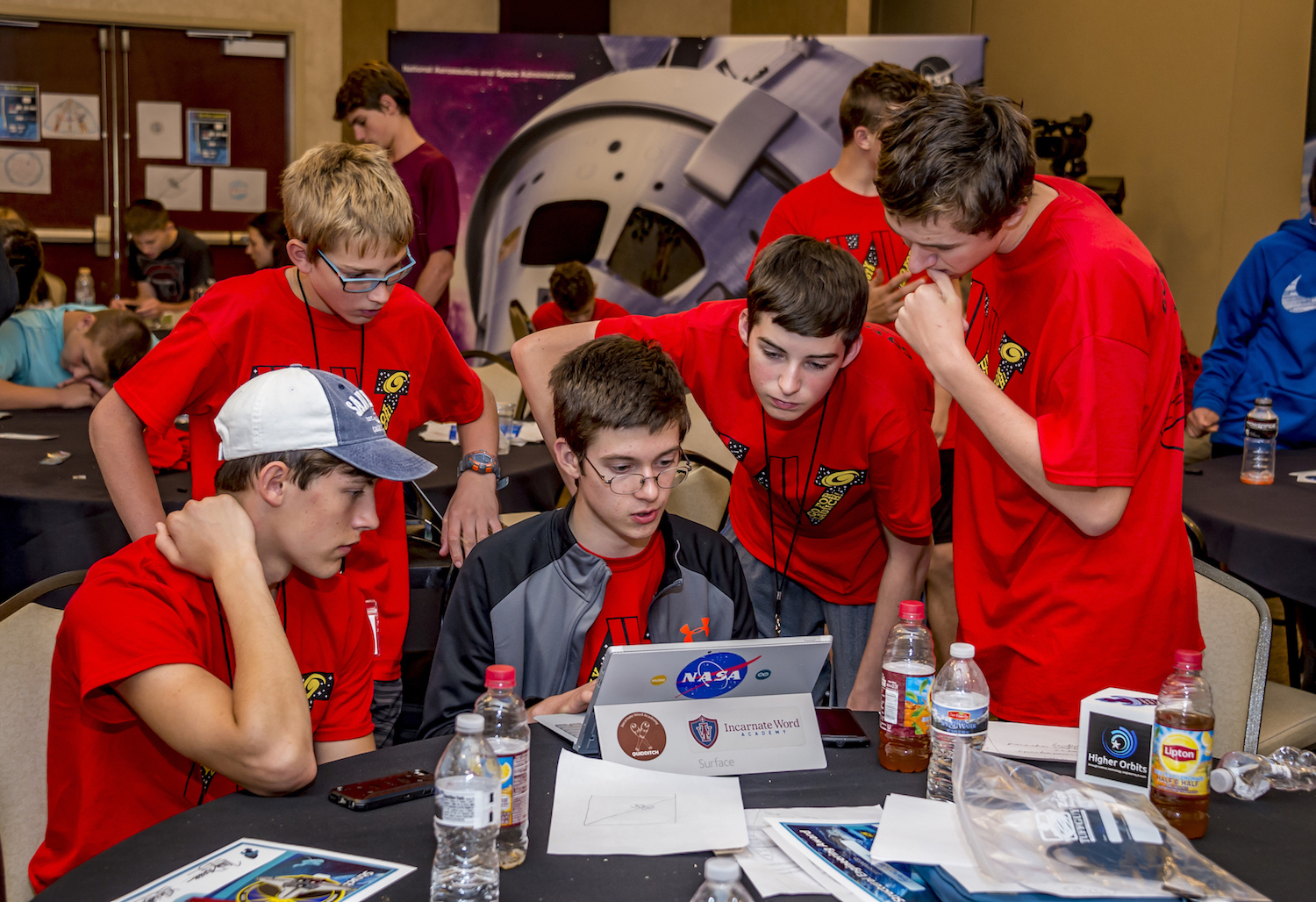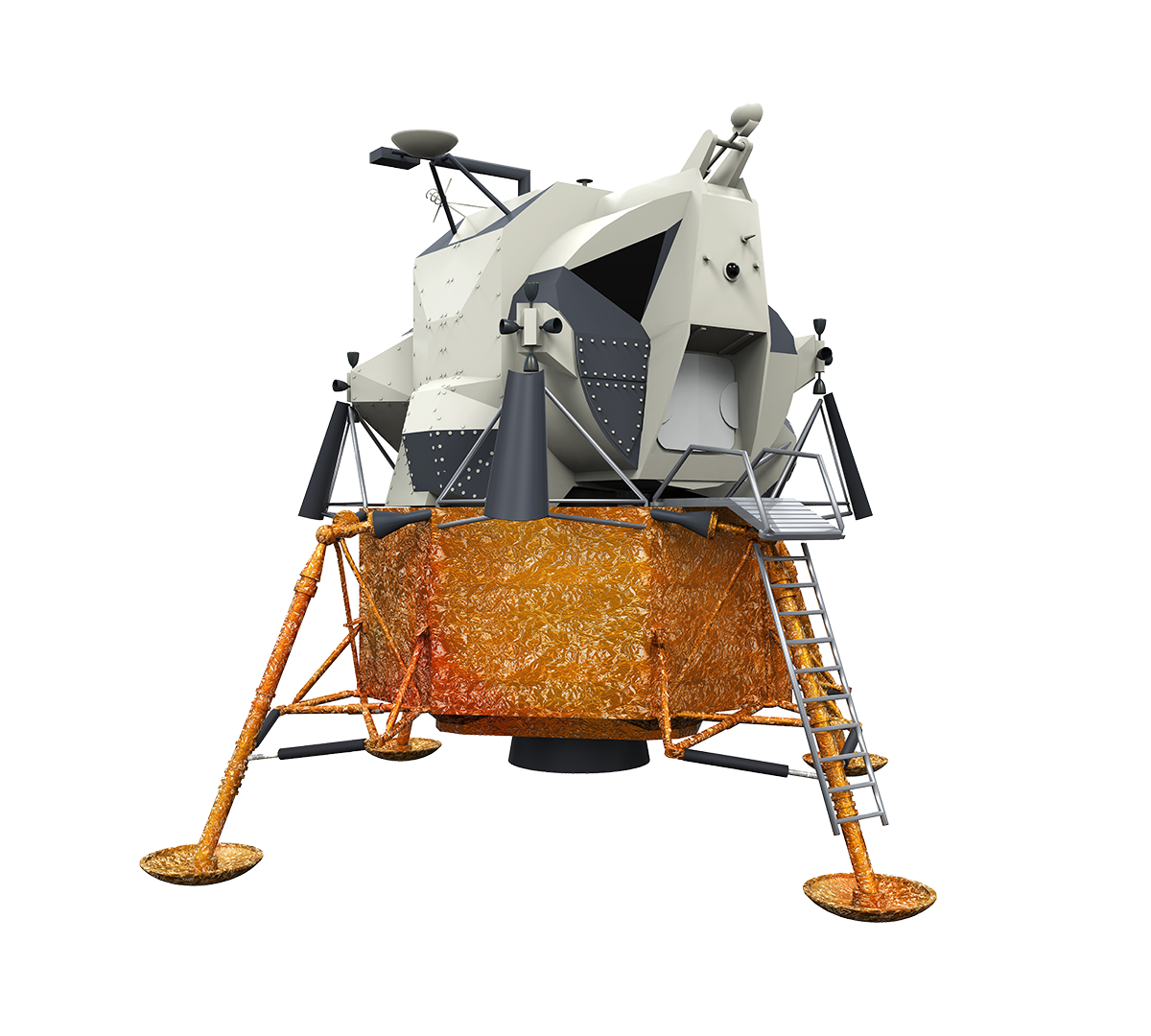Go For Launch! and a crazy idea
by Ferenc from Go For Launch! Wadsworth
For as long as I can remember, I’ve been a space enthusiast. From my youngest memories of watching years’ worth of Star Trek episodes and all the Star Wars movies, bolstered by my parents’ interest in space exploration, a passion sprouted in me to explore the unknown and make an impact in the final frontier. Before I attended Go For Launch!, I had already participated twice at Space Camp in Huntsville, Alabama, and I knew quite enough about space exploration that a guide at Cape Canaveral couldn’t stump me, even though he was writing a book about the early manned space missions.
I knew I was interested in a career in space exploration/science, but beyond the astronaut-specific training I received at Space Camp, I hadn’t had much hands-on teamworking experience in the kind of pure science/engineering world in which many astronauts start their careers. Go for Launch! was an amazing eye-opener in that it introduced me to those skills and got me even more excited in space.
On my first day at Go For Launch!, I was skeptical. It was a local event that I had heard about through a local astronaut. I was expecting neighborhood kids with little knowledge about space doing some trivial space-themed activities. However, I was immediately impressed when it turned out that Ms. Michelle Lucas was the organizer – she had worked closely training astronauts all her career! Furthermore, I was quickly fully engaged when my fellow classmates turned out to be just as enthusiastic and knowledgeable about space as I was – in fact, one of my friends from the program was even working on his pilot’s license, which was a goal I shared. Finally, I was enthralled by the opportunity the program provided – to design, in teams, a legitimate science experiment for the International Space Station (ISS). I learned that the best science experiment at the local stage would go on to compete for its place on the ISS against other regional teams.
After formulating a solid team of like-minded space fanatics, I was ready to innovate! I found myself taking on the position of coordinating leader for my team. Away we flew with ideas, under the pressure of the ticking clock, to design our advanced experiment in two days.
The first day, our team struggled to find a workable idea. I felt like I got to know the environment in which real STEM experts work – trial and error, constant brainstorming, quick pivots, and the thrill of reaching for brilliant discoveries just beyond the horizon. Ironically, my team’s name became New Horizons – fitting!
After wracking our brains together for a couple of hours, our team came up with an interesting (albeit far-fetched) idea. The experiment we envisioned was based on using magnetism and a train-track type mechanism to propel a device with something close to perpetual motion. The application we envisioned would have been a novel source of propulsion for spacecraft if used on a large scale – a type of propulsion meant to be never-ending and never exhaust resources. All of us on the team thought the experiment would be both really complex and fascinating, and we designed an equally complex system for it to work within the small box container parameters of Go For Launch!’s agreement with the ISS. With the first day ending, we went home way too confident that our experiment would be a winner, after some final touches, the next day.
At home, it seems we all shared our experiment idea with our parents. And the response that we all got was that while our idea was interesting, it was really much more complicated than we thought it was… in fact, so complicated that it couldn’t work, given the required experiment parameters.
The next day, we were all downtrodden, but in the spirit of innovation we were also hopeful about putting together a new, workable idea. Chuckling, we all realized we had received the same talk at home, and we decided to start anew. We only had four more hours of brainstorming left until project presentation time, so we had to work efficiently. I felt stressed, like a member of Mission Control during the Apollo 13 mission.
Somehow, we succeeded and designed a legitimate project. We revisited some of the crazy ideas we abandoned early on and looked again at the simplest of ideas, seeking inspiration. Finally, we decided to do something revolutionarily simple, but also interestingly complex – bake bread in space – that had never been done before. Running with this unique idea, we designed a small oven within the experiment parameters for our bread to cook. We were aware of heat and space limitations on the ISS, and we prepared out experiment accordingly. We decided to do a two-part experiment to examine how baking bread dough in space would actually work. Our experiment involved a ground/Earth stage and a space stage. As we frantically put together a PowerPoint presentation, our remaining time ticked away. The time crunch finally ended, and our breathless team stepped to the front of the room to present our project idea to a panel made up of an astronaut and several other important STEM professionals.
Our presentation went very well. Although we had some strong competition from our peer teams, in the end our project won the local competition! It was up to us now to prepare for the regional/final stage with a write-up of our project.
Our final stage preparation happened after the Go for Launch! event, with us working remotely by phone, Google Docs, and Skype – real-world collaboration tools adults are used to and which we got to experience. We assembled what really was an excellent paper on the specific science behind our project, finally submitting it with high hopes. After what seemed like an eternity of waiting, we found out we didn’t make the cut – but, we were thrilled to have had the experience of innovating and competing.
A few months after we completed our project, news came from NASA and the ISS that they had partnered with Hilton’s Double Tree hotels to send a small oven to space to bake fresh cookies in space. I was ecstatic to see my team’s exact idea really implemented (a cookie isn’t bread, but the baking of dough is the same concept and required the same technology)! Our simple idea wasn’t that crazy! It gave me a real sense of accomplishment to know that my team’s far-fetched idea was really working in space, even if wasn’t with our team’s guidance.

The International Space Station’s cookie oven experiment wasn’t such a crazy idea!
Photo Credit: NASA/Doubletree
Go For Launch! is a fantastic program. I was exposed to the real science of working in the field of space science, and I enjoyed it tremendously. The program Ms. Lucas put together has inspired me to further pursue space science on my own through high school internship opportunities and other summer space-themed programs. (I even started an aerospace club at my high school so I could share the space love with others of a like mind!)
The final frontier has gotten more real and of greater importance for me, and I see this as something truly positive. The more there is to explore, the better. And as space science is propelled forward, one crazy idea and experiment at a time, I look forward to a bright future where I can be part of the adventure.

